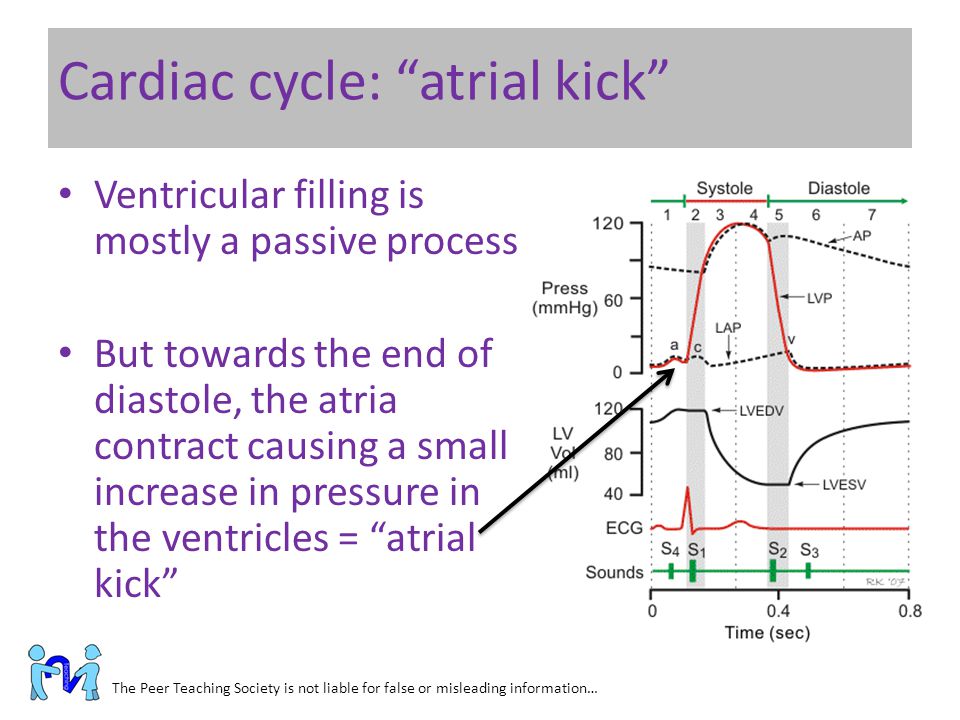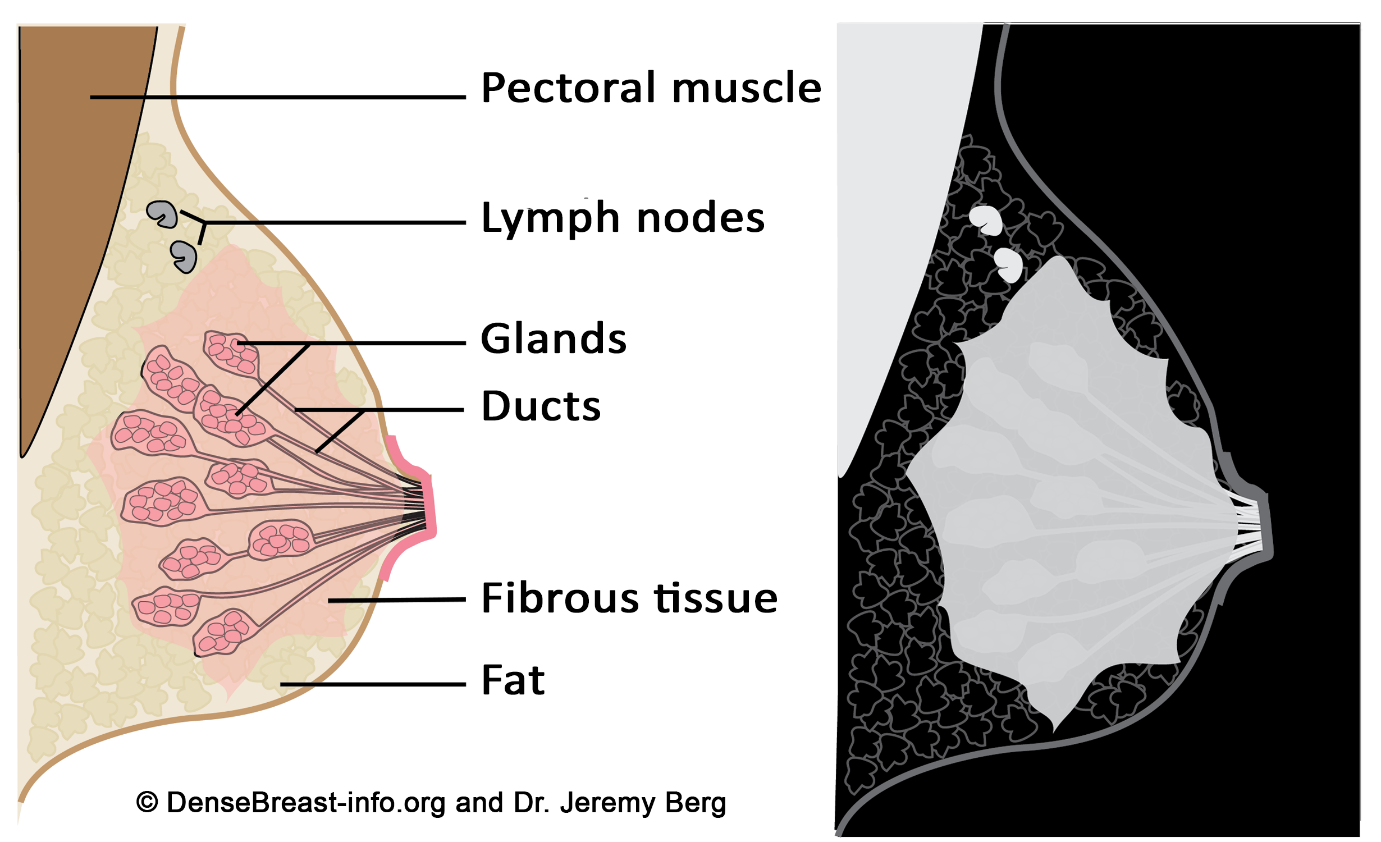A nurse is reviewing the anatomy and physiologic functioning of the heart. The nurse should recognize that which statement best describes the atrial kick?
The atria contract toward the end of diastole and push the remaining blood into the ventricles.
The atria contract during systole and attempt to push against closed valves.
Atrial kick is the pressure exerted against the atria as the ventricles contract during systole.
Contraction of the atria at the beginning of diastole can be felt as a palpitation.
The Correct Answer is A
A. The atria contract toward the end of diastole and push the remaining blood into the ventricles.
This choice is correct. During atrial systole (atrial contraction), the atria contract, pushing the remaining blood into the ventricles. This additional filling of the ventricles optimizes cardiac output.
B. The atria contract during systole and attempt to push against closed valves.
This statement is incorrect. The atria do not contract during systole; they contract during diastole (atrial systole) to fill the ventricles.
C. Atrial kick is the pressure exerted against the atria as the ventricles contract during systole.
This statement is incorrect. Atrial kick refers to the atrial contraction, not the pressure exerted against the atria.
D. Contraction of the atria at the beginning of diastole can be felt as a palpitation.
This statement is not entirely accurate. A palpitation is a sensation of rapid or strong heartbeat, which might be felt during various cardiac events, not specifically during atrial contraction at the beginning of diastole.

Nursing Test Bank
Naxlex Comprehensive Predictor Exams
Related Questions
Correct Answer is C
Explanation
A. Nystagmus in extreme superior gaze: Nystagmus is an involuntary eye movement and is not a normal finding, especially in extreme superior gaze. Nystagmus can be indicative of neurological issues and requires further evaluation.
B. Slight amount of lid lag when moving the eyes from a superior to an inferior position: Lid lag refers to a delay in the downward movement of the upper eyelid during eye movement. This can be a sign of hyperthyroidism and is not a normal finding.
C. Parallel movement of both eyes: This is the correct answer. During the diagnostic positions test, the nurse should observe parallel movement of both eyes in all directions, indicating normal extraocular muscle function and coordination.
D. Convergence of the eyes: Convergence refers to the inward movement of both eyes when focusing on a close object. While convergence is a normal phenomenon, it is not specifically assessed during the diagnostic positions test, which primarily evaluates the range of motion and coordination of the extraocular muscles.
Correct Answer is B
Explanation
A. Glandular tissue, which supports the breast by attaching to the chest wall: Glandular tissue is indeed a part of the breast structure, but it is not responsible for supporting the breast by attaching to the chest wall. It's the Cooper's ligaments, which are fibrous connective tissue, that provide structural support.
B. Fibrous, glandular, and adipose tissues: This statement is correct. The breast is composed of glandular tissue (responsible for milk production), fibrous tissue (including Cooper's ligaments for support), and adipose tissue (fat).
C. Primarily muscle with very little fibrous tissue: The breast contains very little muscle tissue. The main supportive structure is fibrous tissue, not muscle.
D. Primarily milk ducts, known as lactiferous ducts: Milk ducts are part of the glandular tissue and are responsible for carrying milk. However, the breast is not primarily made up of milk ducts; it consists of a combination of glandular, fibrous, and adipose tissues.

Whether you are a student looking to ace your exams or a practicing nurse seeking to enhance your expertise , our nursing education contents will empower you with the confidence and competence to make a difference in the lives of patients and become a respected leader in the healthcare field.
Visit Naxlex, invest in your future and unlock endless possibilities with our unparalleled nursing education contents today
Report Wrong Answer on the Current Question
Do you disagree with the answer? If yes, what is your expected answer? Explain.
Kindly be descriptive with the issue you are facing.
